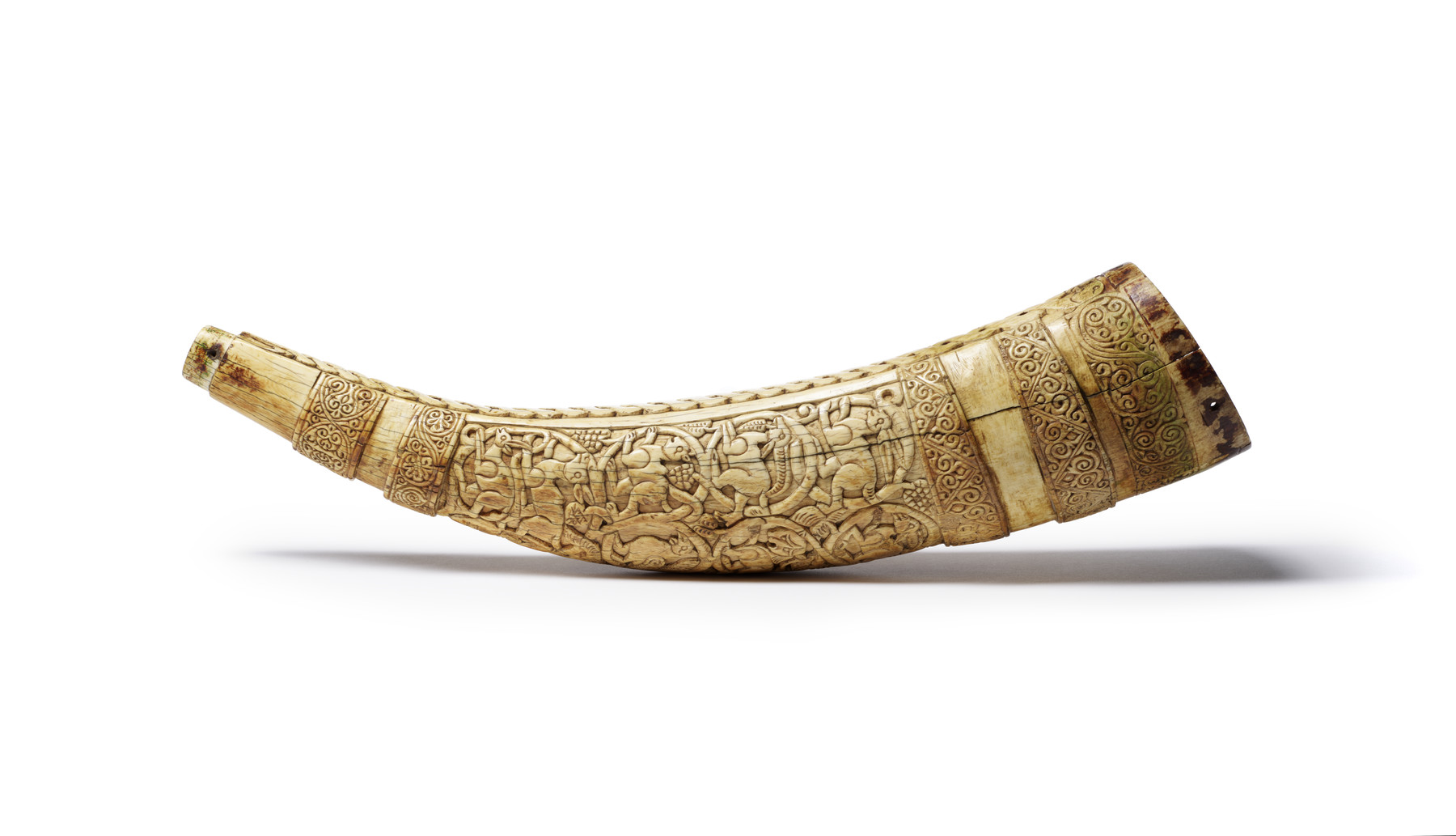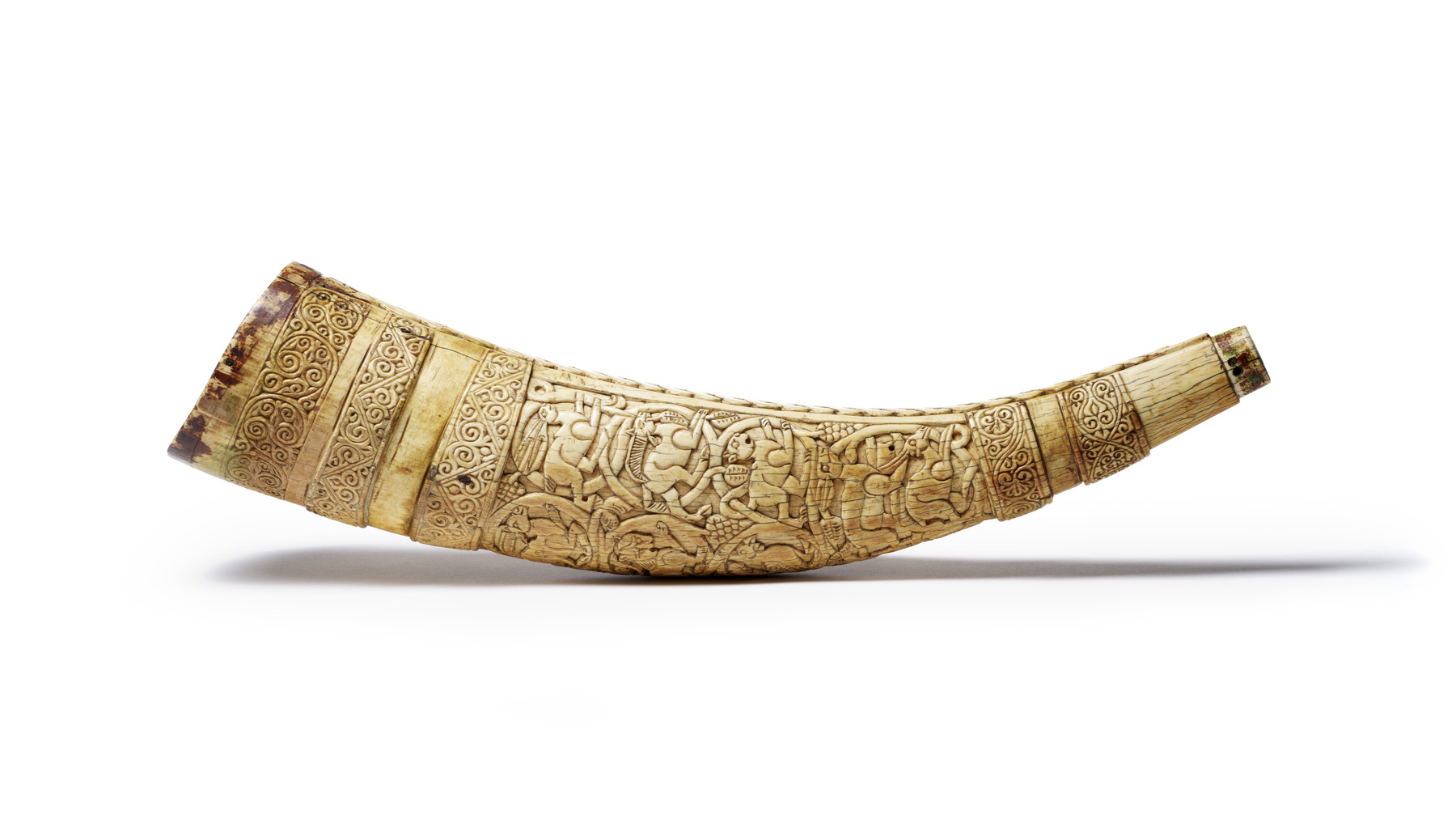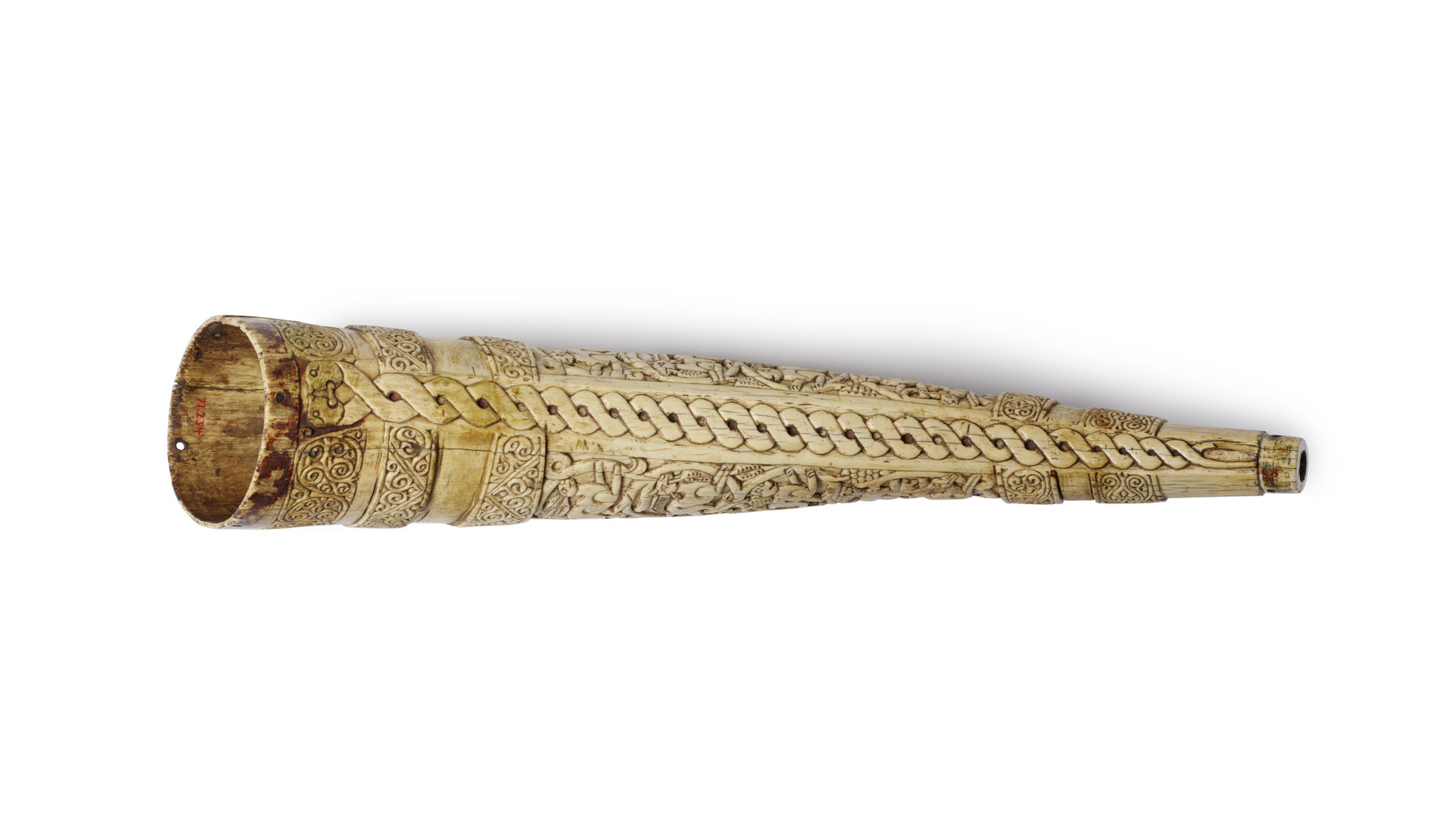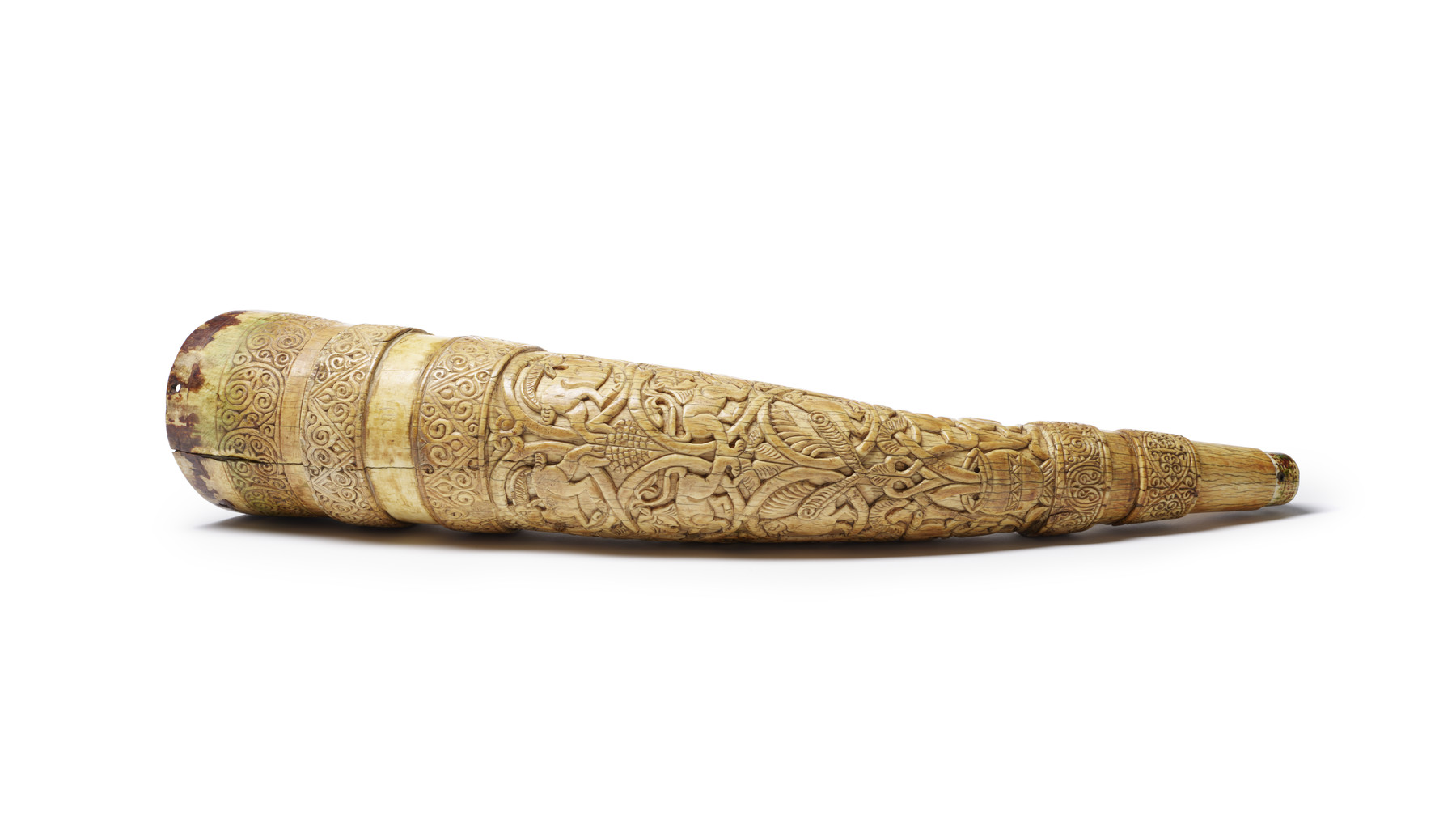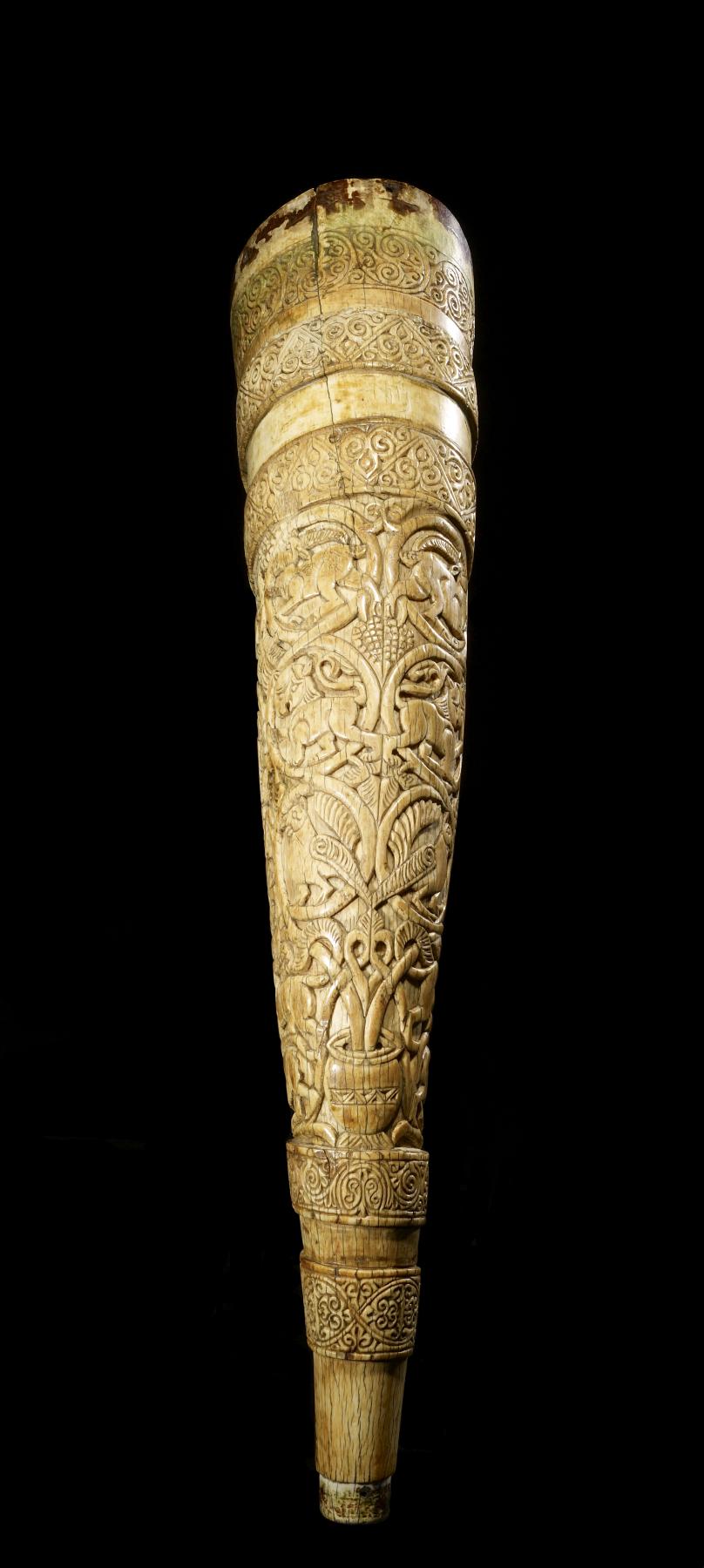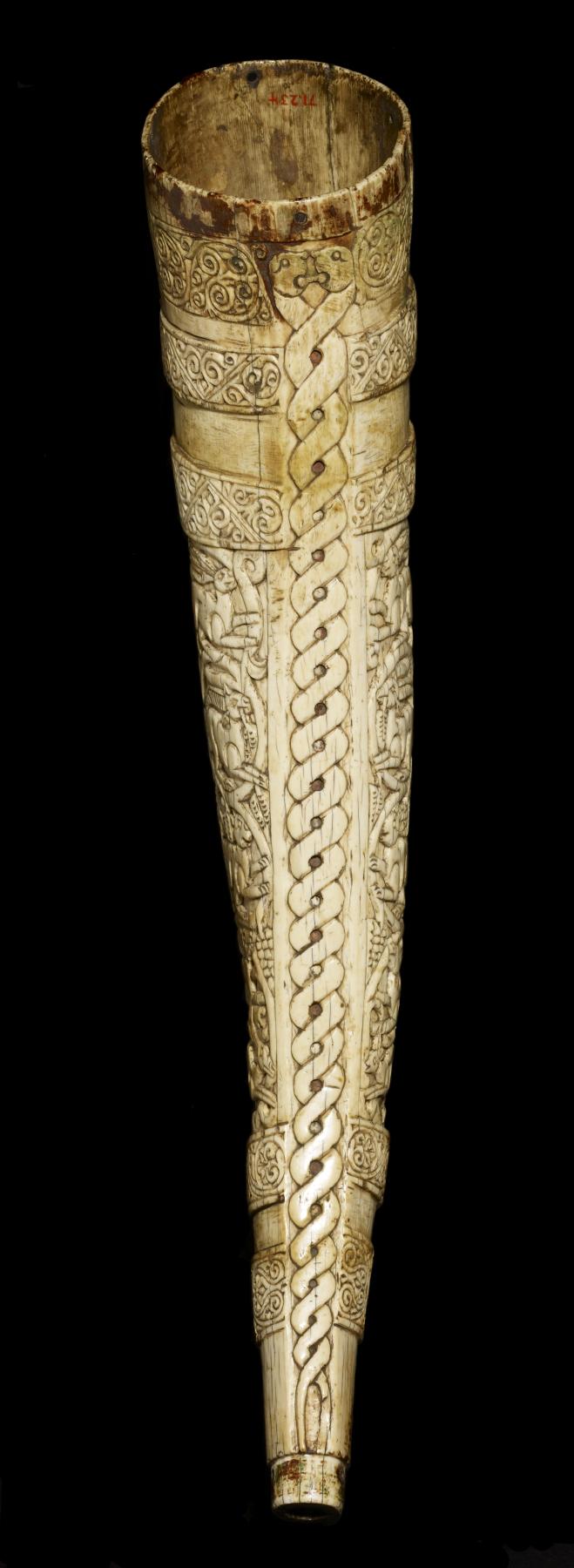Horn with Animals in Vine Scrolls
(Medieval Europe )
Ivory horns, called oliphants, were made to represent the horn of St. Hubert, patron saint of hunters. They were used as hunting, drinking, or military signal horns and also as symbols of the transfer of power or property. Beginning in the 12th century, oliphants were often transformed into reliquaries and preserved in church treasuries. This example is decorated with the mixture of Byzantine, Islamic, and western motifs characteristic of the art of southern Italy at this time.
Provenance
Provenance (from the French provenir, 'to come from/forth') is the chronology of the ownership, custody, or location of a historical object.
Duke of Brunswick [Guelph Treasure]; General in the service of the Duke of Brunswick [date of acquisition unknown], by gift; Widow of the General [date of acquisition unknown], by inheritance [history from the Duke of Brunswick through the widow's sale of the piece is according to the dealer Heilbronner of Berlin]; antiquities dealer in Berlin; Henri Daguerre, Paris [date and mode of acquisition unknown]; Henry Walters, Baltimore, 1926, by purchase; Walters Art Museum, 1931, by bequest.
Exhibitions
| 1983-1984 | Ivory: The Sumptuous Art. The Walters Art Gallery, Baltimore. |
| 1984 | The Taste of Maryland: Art Collecting in Maryland 1800-1934. The Walters Art Gallery, Baltimore. |
| 1971-1972 | World of Wonder. The Walters Art Gallery, Baltimore. |
Conservation
| Date | Description | Narrative |
|---|---|---|
| 5/2/1984 | Examination | examined for exhibition |
Geographies
Italy (Place of Origin)
Measurements
9 1/16 x 22 1/16 x 4 1/16 in. (23 x 56 x 10.3 cm)
Credit Line
Acquired by Henry Walters, 1926
Location in Museum
Accession Number
In libraries, galleries, museums, and archives, an accession number is a unique identifier assigned to each object in the collection.
In libraries, galleries, museums, and archives, an accession number is a unique identifier assigned to each object in the collection.
71.234

